European Explorations and New World Beginnings
Some Great Explorers of the late 1400's to the early 1600's
Bartolomeu Dias (1451-1500)
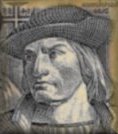
From 1487-1488, he was the first to reach the southern tip of Africa. Dias sailed on a route around Africa to Kwaaihoek at their farthest point. His crew however, refused to go to India. The discovery of the passage around Africa was significant because, for the first time, Europeans could trade directly with India and the other parts of Asia, bypassing the overland route through the Middle East, with its expensive middlemen. The official report of the expedition has been lost.
Christopher Columbus (1451-1506)
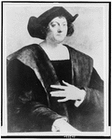
Columbus was the most famous explorer to reach the Americas. There is even a holiday named after him. He sailed on four voyages, 1492-1493, 1493-1496, 1498-1500 and 1502-1504. He was born in Genoa, Italy, but he sailed for Spain when King Ferdinand and Queen Isabella said they would pay for his voyage in 1492. Columbus went to get spices and gold from Asia by being the first to sail west. He found islands which he thought were part of the Indies. He brought back Native Americans (mistakenly calling them “Indians”). He found little gold, and he did not see Japan at all. The King and Queen named him, Admiral of the Ocean Sea.
John Cabot (1451-1498)
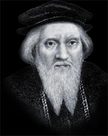
John was born in Genoa, Italy, in 1451, the same town and the same year as Columbus. He moved to England and became the King's friend. He sailed to Newfoundland in 1496, and made a map of the area. He thought that he found China, but he certianly did not. In 1498, he left with 5 ships for another adventure, but he was never heard from again.
Vasco Nunez De Balboa (1475-1519)
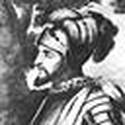
He was Spanish. Vasco sailed to Columbia in 1500. He then lived in Hispaniola and in other parts of Central America. He heard about another ocean, so he led an expedition west in 1513. There he found a big peaceful ocean (Pacific Ocean), that he named the South Sea. He was no longer a favorite of the King. He was arrested, convicted of treason, and beheaded in early 1519.
Ferdinand Magellan (1480-1521)
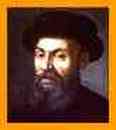
He was Portuguese, but he sailed for Spain, because Portugal would not pay for his war wounds after he fought in their war against Morocco. Magellan decided to help the King of Spain find out if the Spice Islands were on the Spanish side of the world or the Portuguese side of the world. (The two countries had "divided" up the world.) He sailed down South America's coast, around its tip to the "new" ocean and then on across to the Philippines. He was killed there, but Juan Sebastian del Cano took over. Sebastian del Cano sailed his ship back to Spain to became the first ship to sail around the world.
Hernando Cortes (1485-1547)
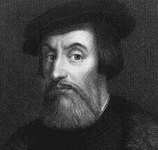
He was the Spanish Conquistador who conquered Mexico and the Aztecs(now Mexico City). Cortes "gave" Mexico to Spain in 1521. The Aztecs first thought the Europeans were gods, because they looked like a legendary god-king who was light-skinned and bearded. The Aztecs received Cortes with great honor. However, Cortes seized the Aztec ruler Montezuma as a hostage, and forced him to swear allegiance to the king of Spain and provide a ransom in gold and some jewels. Cortes sent all of this gold back to Spain. He took large amounts of land for his family and friends! He founded the city of ''Veracruz'' in 1519.
Henry Hudson (1570-1611)
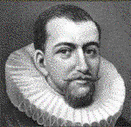
He was born in England and sailed for England to look for northwest and northeast passages to China in 1607 and 1608. He later joined the Dutch East India Company, and sailed for the Netherlands. He went to the new continent and found a great river in New York (The Hudson River). He claimed it for the Dutch. Then, he sailed for England again. On that voyage, he found a huge bay in what is now Canada. He thought it was the Pacific Ocean. This body of water was later named Hudson Bay. While exploring, the bay became very icy. By late fall, the ship was frozen in. With their food running out, Hudson's crew grew increasingly angry. When finally the ice holding the ship melted, Hudson wanted to continue west. In June 1611, his crew had had enough. They forced Hudson, his son, and sailors loyal to Hudson in a small boat. They were never heard from again.
Jacques Cartier (1491-1557)
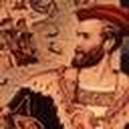
He sailed for France and was French. He discovered and explored the Saint Lawrence River from the Atlantic in 1534. He was looking for the northwest passage to China. He went as far as Montreal on his 2nd and 3rd voyages. He wrote in his journals about a lot his travels. He "claimed" Canada for the French.
Francisco Vasquez De Coronado (1510-1554)
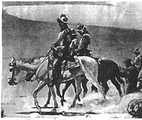
He was born in Spain. In 1538, he became the governor of New Galicia, the northern part of Mexico. He went looking for the Seven Cities of Cibola, because he wanted to find gold. He traveled all over the land that is now Arizona, New Mexico, Colorado, Texas, Oklahoma, and Kansas. He did not find much gold or the Cities of Cibola.
Samuel De Champlain (1567-1635)
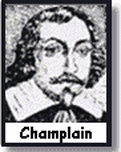
He was French and sailed for France. Some people call him "The Father of New France". He made twelve explorations and map making trips from 1603 to 1633. He traveled from the Bay of Fundy to Cape Cod. He started the first French colonies at Sainte-Croixe in 1604, Port Royal in 1605, and Quebec in 1608. He also was the first European to explore Lake Champlain, Lake Huron, and Lake Ontario. He started fur trading with Native Americans along these routes.
Sir Frances Drake (1540-1596)
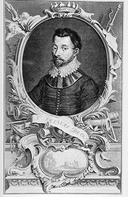
He was a pirate-turned-explorer, born in 1540, his was the second ship to circumnavigate the globe. He was a loyal servant to Queen Elizabeth of England. She sent him around the world in a ship named the Pelican (later renamed the Golden Hind). He stopped in Peru and Chile and traded with the Spanish for gold and silver. He followed to coast while going north, until he came the northern part of California. He named this land New Abion and claimed it for England. He sailed around the world in 1580. He was able to prove that Tierra del Fuego was an island, and not a continent as many Europeans believed. He led raids on the Spanish settlements in the new world, and brought back a lot of gold and silver to England. He died from dysentery near Panama in 1596.
Juan Ponce De Leon (1474-1530)
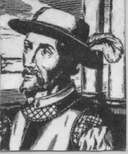
He was born in San Tervas de Campos, Spain, in 1474. He sailed on Columbus' second trip to the New World. After that, Juan settled on a Caribbean island named Hispaniola. In 1506, he "discovered" a close-by island named ''Borinquin''(puerto Rico today). He became the governor of this island. Juan wanted something more. He begged the king to give him men and ships to search for the island of Bimini, where there was said to be a "fountain of youth". On his quest, he explored many islands and a peninsula of which he named "Florida" in 1513. He called it Florida because it had lots of flowers. He never was able to find the fountain of youth.
